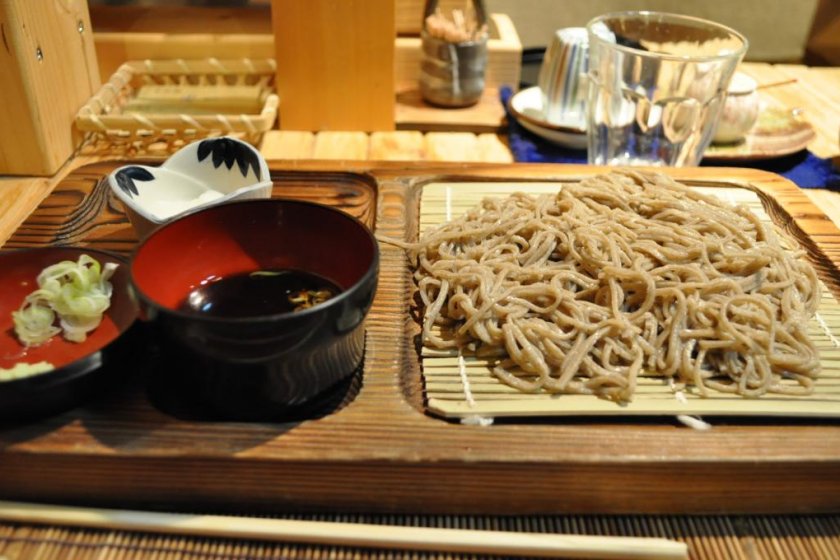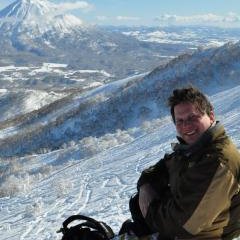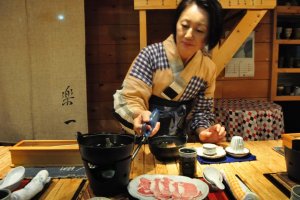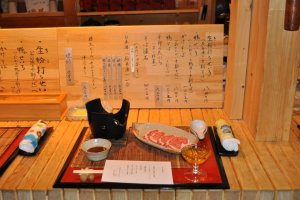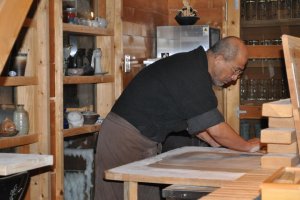Noodles are an obsession in Japan often missed as trade warriors and farmers battle over that other source of carbohydrates, rice. However, where rice is given as a universal throughout Japan, or at least draws its lines at the prefectural level, every other town appears to be touting some noodle or another that it is famous for. But while debates ramble on the relative merits of rotund udon versus flat, sticky kishimen or angel-hair like soumen, the refined buckwheat soba hovers above the fray.
Sophisticated palates are unforgiving of soba which is over or undercooked and does not achieve just the right level of al dente, and the delicate nature of the noodle itself, at best presented naked on a bamboo seiro mat, does not tolerate mishandling that might be camouflaged for lesser noodles doused in thick broths or curries.
To taste soba at its very best, one needs to visit the unassuming 12-seat restaurant Rakuichi (楽一) at the base of the access road to the Annupuri Kokusai Ski Area in Niseko. Soba master Rai-san and his charming wife Midori operate this establishment with all the subtle elegance that the delicate cuisine requires to enhance its taste. What makes the Rakuichi soba stand out above the rest?
Taste. Soba is a product of the northern regions, so Rakuichi is getting its buckwheat flour near to home unprocessed for preservation. Add to that the only other key ingredient, water, from a spring in a region famous for the quality of H2O filtered through the heavily snowed volcanic peaks of Mt. Yotei and the Niseko range, and you have the perfect combination to produce an ideal meal.
Freshness. Your noodles will be made before your eyes and watching Rai-san perform the work of a master craftsman is part of the experience. Shortly before your soba is to be served, Rai-san will shape a grey ball of buckwheat dough in a massive stone bowl and pound it with his hands into a perfect disc. He will then move the disc to an immaculate counter where he will apply a wooden roller, folding over and over until all the air is pushed out while adding dashes of flour to achieve the ideal consistency as the disc flattens into a broad rectangle. Finally, he will take a large, specifically designed cleaver to cut the folded rectangle into long noodles, to be dropped into boiling water for a short 3-minutes and then arrested with ice cold water prior to being assembled on the seiro for presentation.
Atmosphere. Rakuichi is elegant in its simplicity. Rai-san hand built the restaurant himself with local lumber and the wabi-sabi essence as you pass over a suspended walkway to the cabin-like dining area is garnished by the elegant kimono that Rai-san and Midori-san don while serving.
Price. Given the level of the cuisine, reverse sticker shock might occur when a simple soba-and-tempura lunch is followed by a bill of only ¥1,300 and a magnificent 7-dish kaiseki course (evening only, by reservation) tops out at only ¥5,000, about a quarter of what a similar meal might cost in Tokyo.
Rakuichi does not accept credit cards, so carry cash with you, and since the ingredients for their kaiseki dinners are sourced fresh daily, no cancelations are accepted within 24-hours.
